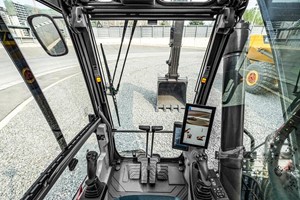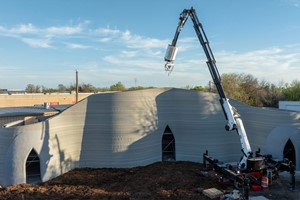To survive in today’s marketplace, and provide meaningful solutions to construction’s challenges, contractors need to embrace digital transformation.
Building, by nature, is a physical and collaborative action. The building process has continued to evolve, improved by technological advances in safety, modern machinery and resource management. However, the back-of-house portion of construction has not received the same attention. It is time the construction industry invested in the behind-the-scenes processes of construction, bringing in new digital solutions.
As the industry expands, individual companies become fragmented from one another. This lack of communication makes it difficult to implement common industry-wide collaborative solutions or to connect important partners across different stages in the construction process. To better understand these issues, Dodge Construction Network commissioned a survey of more than 600 respondents across all levels of the construction industry. The results of the survey reveal the pain points that come with digitizing construction, but also of the enormous benefits it can bring.
Laying the Bricks for Digital Transformation
Implementing digital solutions is a company-wide undertaking, involving everyone from the c-suite to sales to those working on site. We are already seeing the early-stage impact of nascent digital transformation across the construction value chain: 84% of field-level workers believe that their company’s digital transformation strategy has impacted how they work. From those in the office, 47% believe digital transformation has already transformed the construction industry.
Both office and field workers are ready for changes that will make jobs easier and are willing to take on new digital tools to improve their workflows — 95% of field workers say they’d be willing to use tools that combine or streamline parts of their work. From a corporate perspective, these tools increase productivity and cut down on costs related to worker management. With both sides on board, the construction industry is ready for digital transformation.
Roadblocks to Transformation
Excitement and willingness do not directly translate into action. Many companies remain in the most incipient stages of their digital transformation strategies and struggle to move further along in the process. By remaining in the “implementation” phase, they fail to experience the full benefits of their digital solutions. Even worse than struggling to pass implementation is the portion of respondents who do not have transformation strategy at all.
The data showed that more than a third of office-level workers are working on implementing digital solutions, and are making it a high priority. However, only 15% of those have fully implemented their strategy, and 38% say they haven’t built out their strategy or aren’t making it a priority at all.
This laggard approach could be the result of digital transformation’s inherent complexity. Researching, proposing and implementing digital tools is far from easy, and as many begin to embark on the digital journey, they run into problems. These problems can vary in severity, either slowing the process down, incurring additional costs or even stalling the process completely and disrupting existing workflows. This was the experience for almost half (49%) of our respondents, with 39% reporting that the issues they faced increased the cost of their digital transformation strategy significantly.
Even those who have passed implementation and completed their process have a mixed definition of what digital transformation means. With such a wide range of possibilities, many have reduced successful digital transformation down to mobile devices replacing traditional methods on the jobsite. Our data found that nearly a third of respondents report introducing smartphones to the jobsite, and 30% report using iPads and tablets. This limited purview of digital transformation is holding many back from experiencing its true benefits.
The Best Digital Solutions are Often the Simplest
This study revealed that the construction industry’s relationship with digital solutions is lukewarm at best. There are countless applications that many want a digital tool for; 22% of office workers want a digital solution to better manage workflows, and 18% of field workers want a digital solution for sourcing projects.
However, perhaps the most important application of digital transformation is the simplest: a solution to construction’s interconnectivity and communication problems. To successfully complete a project, multiple companies must work together — the industry needs a way to form strong connections, and it needs a tool to get it there. Many companies report a splintered approach to communication, even internally; 34% of field-level respondents say their company has implemented digital efforts, but different teams or departments are using different solutions.
Connecting the Dots of Digital Transformation
Construction cannot afford a breakdown in the information supply chain, the chain of communication and collaboration fundamental to how we build. Construction professionals need an information solution that connects companies and provides reliable data and insights, quickly and easily. To reach this, construction must enter an era of digital transformation that spans across the entire industry, creating a better chain of communication for every company.
Without a paced approach to digital transformation, the industry can expect to become more fragmented and risk further complicating the building process. This data sets up construction for one of two futures: a fragmented industry, or a united one, rich with digital solutions.














